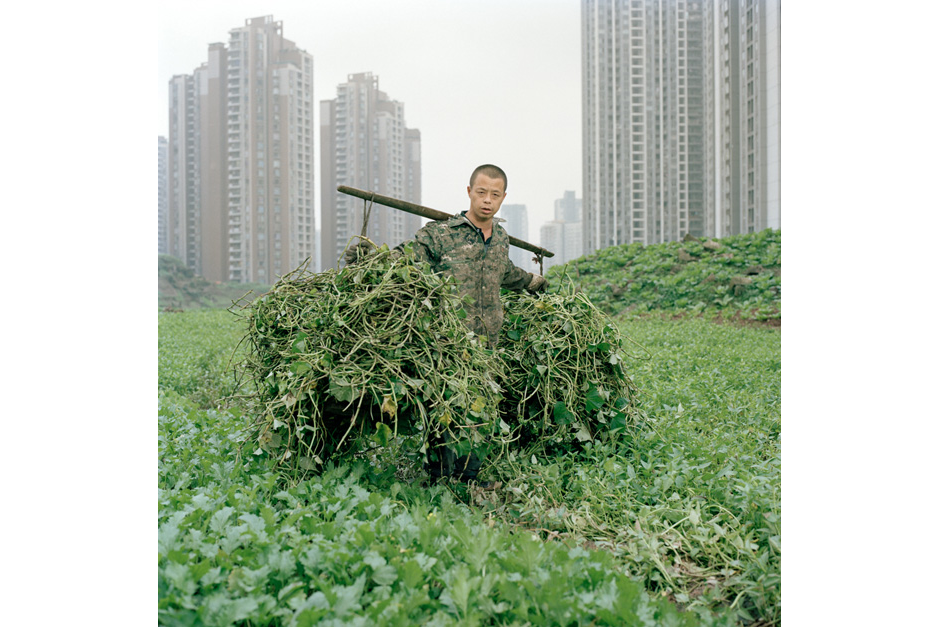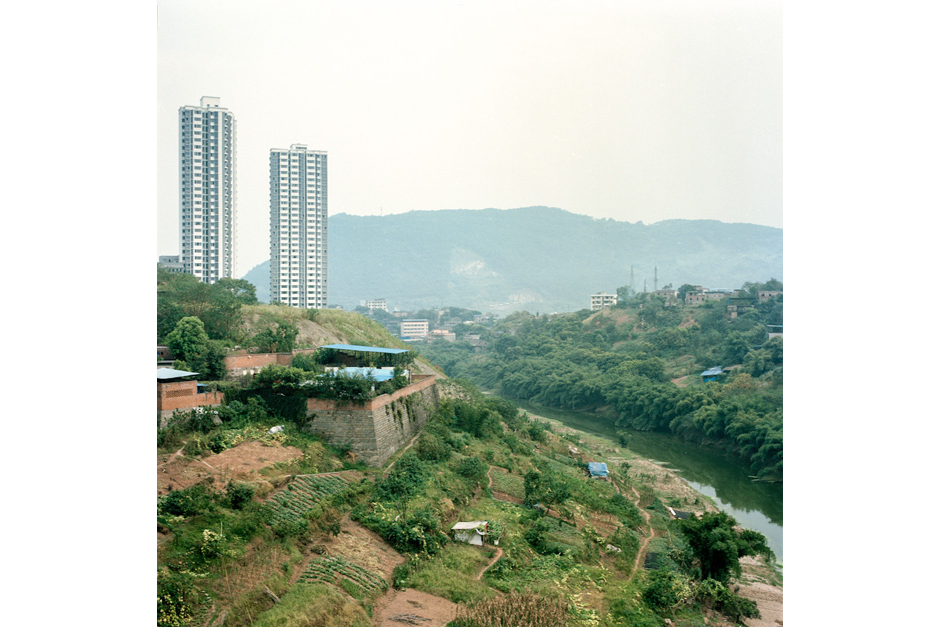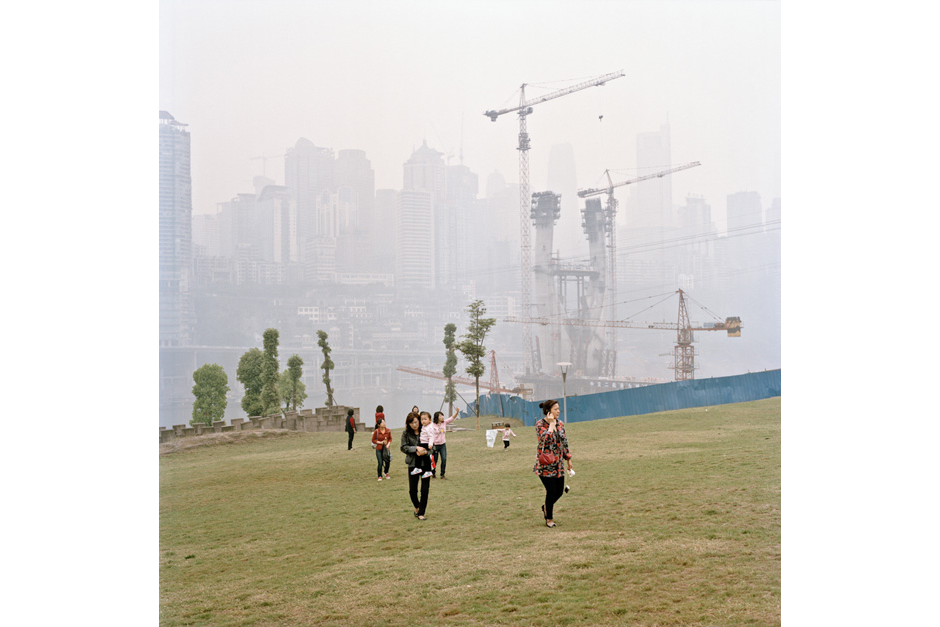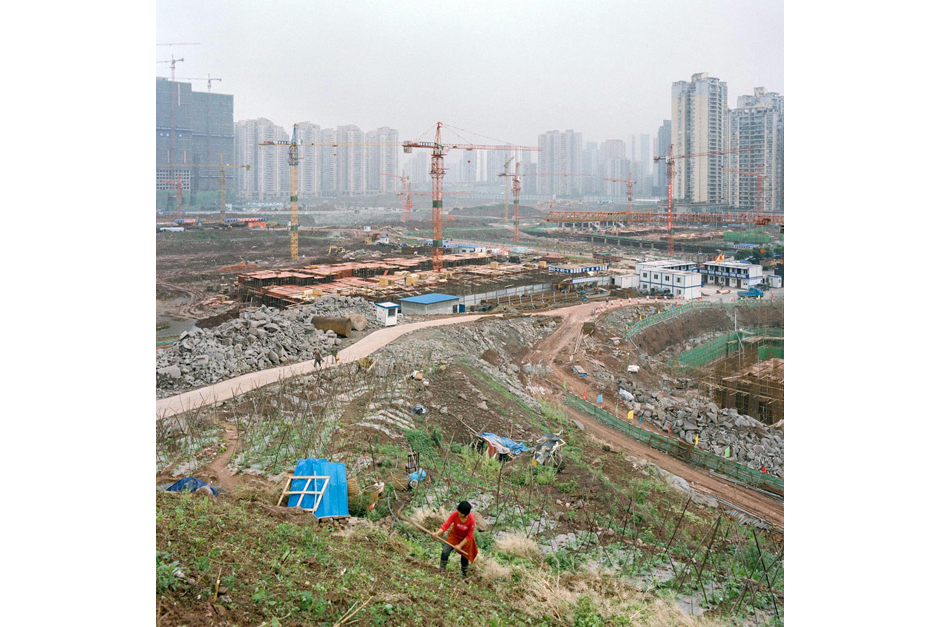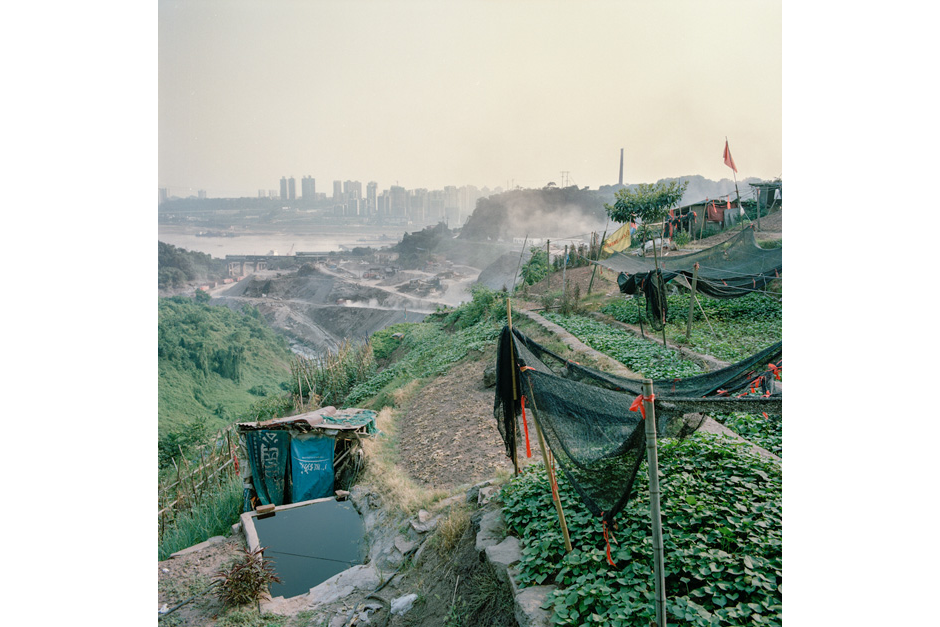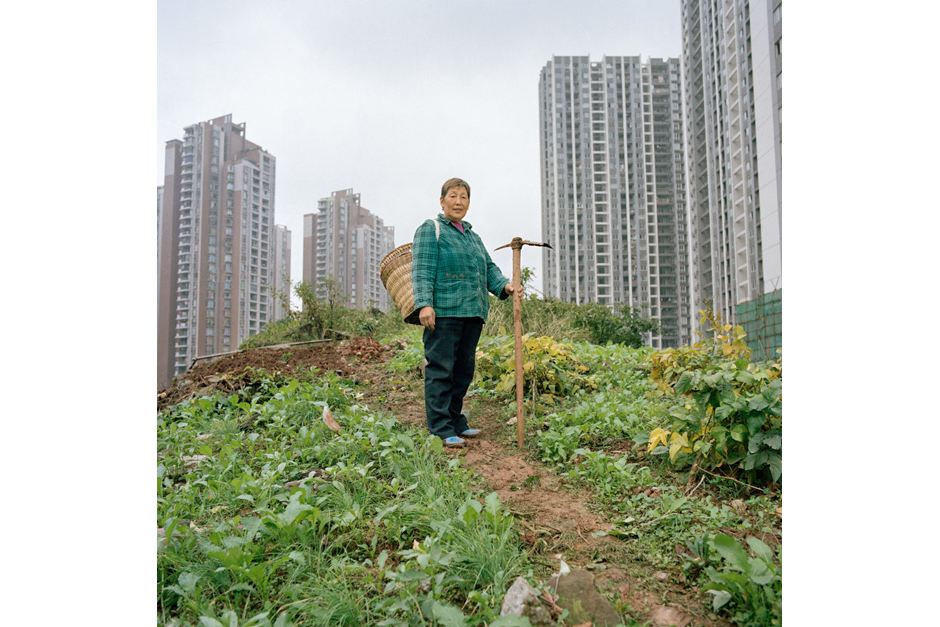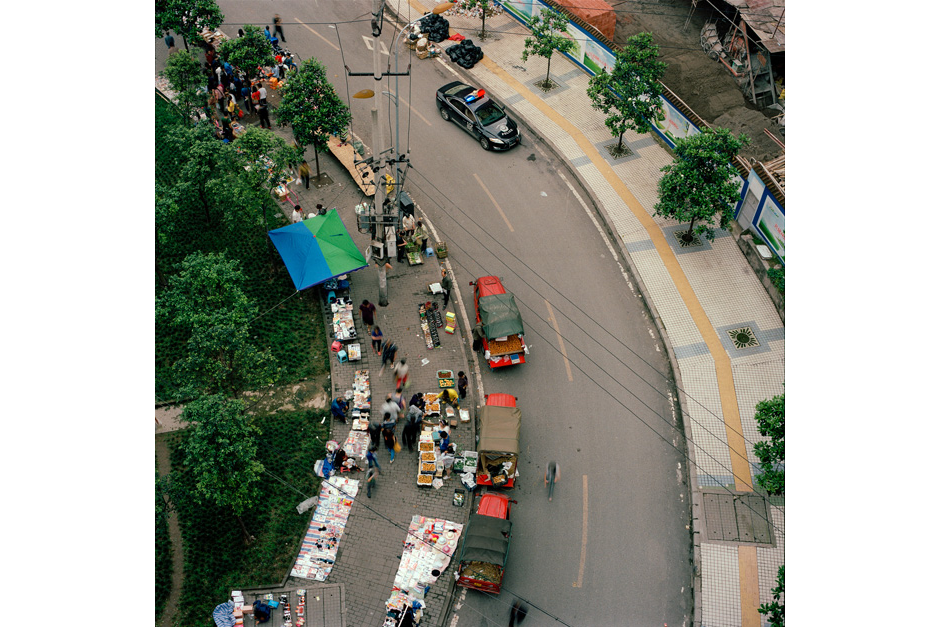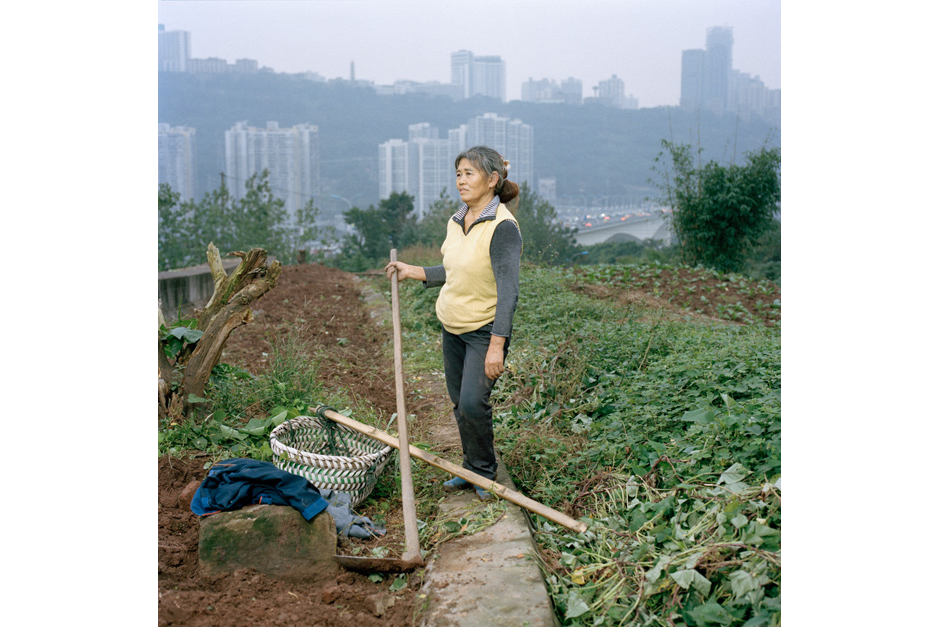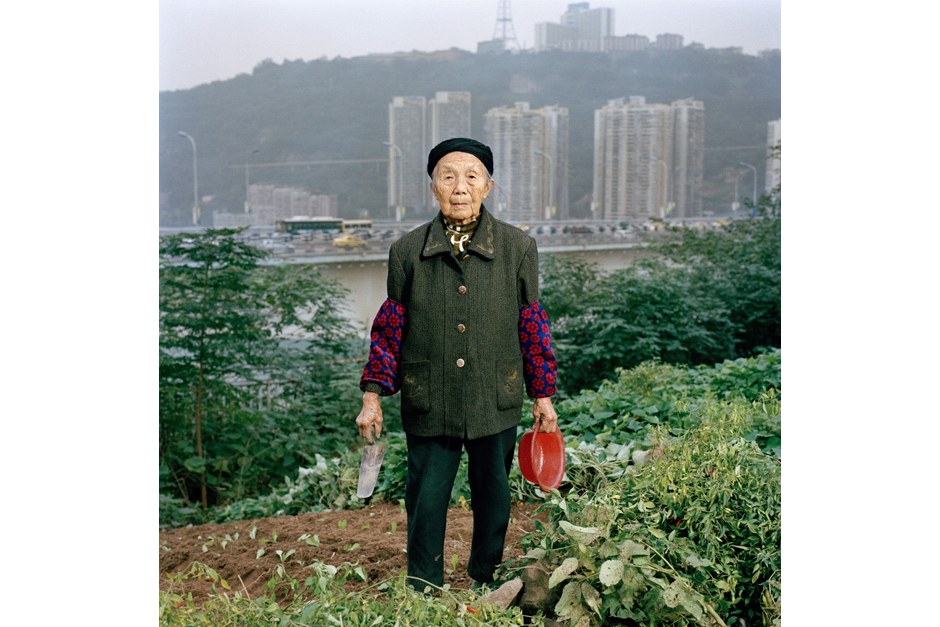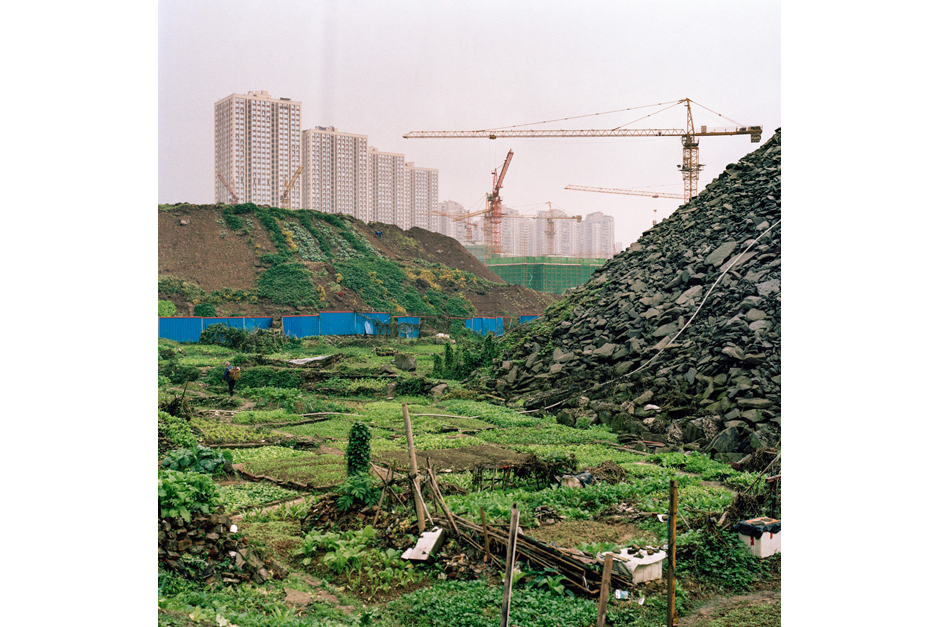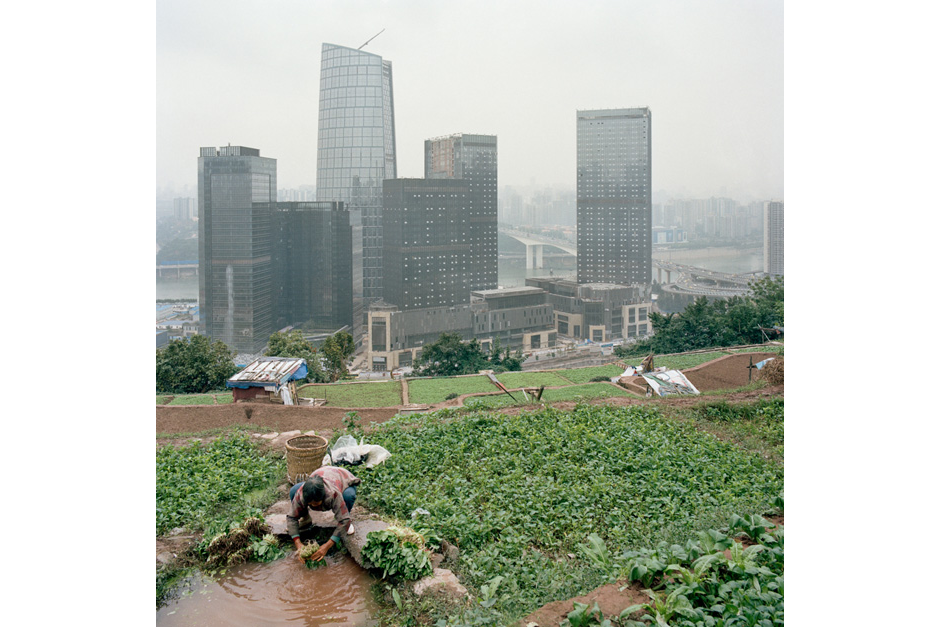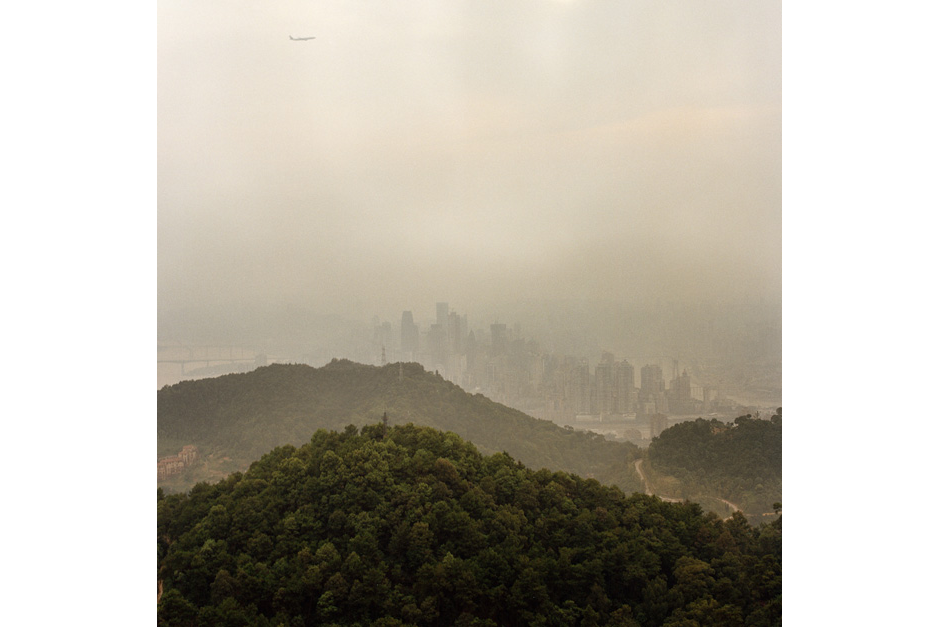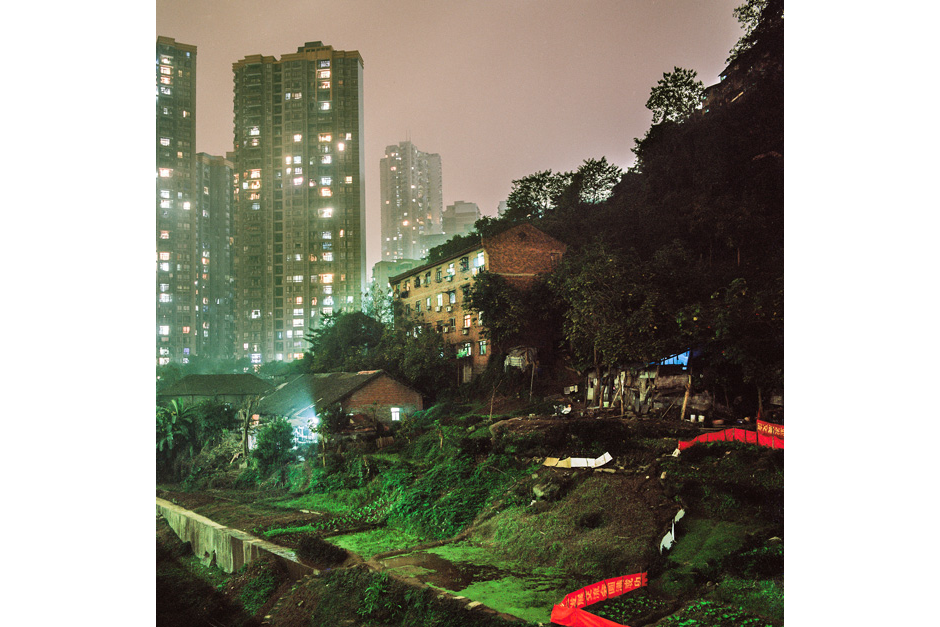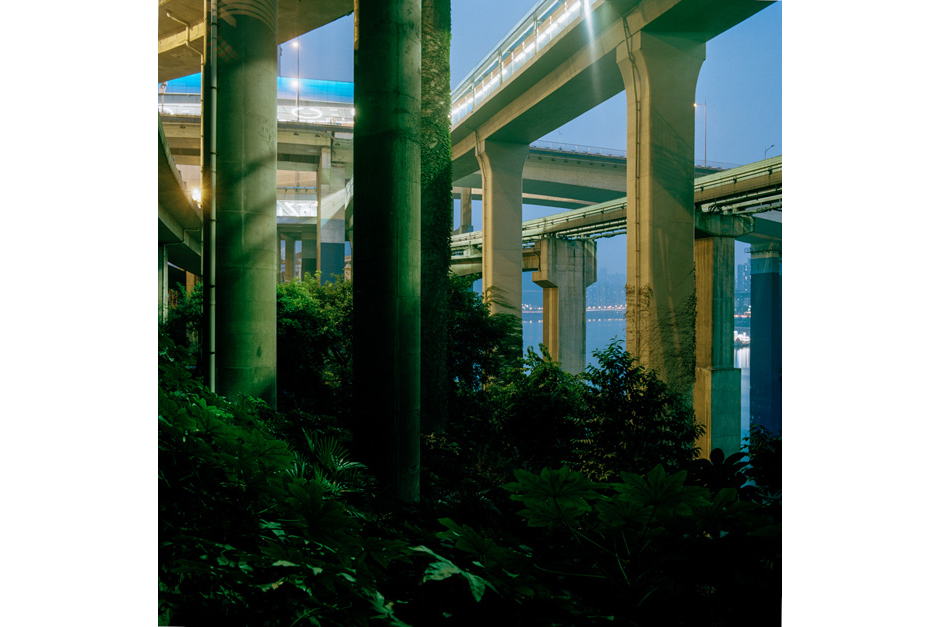Between a Rock and a Hard Place
Urban Farmers in Chongqing
It’s a feature of the landscape one sees throughout China. On the sides of roads, at the edges of construction sites, on the steep banks of rivers, and in pastures that wrap around the fat pylons of future highways, Chinese people are farming, tilling tiny jewel-like plots that may only last a season, or rushing a herd of goats or a flock of ducks through traffic.
As its leaders often remind the world, China has twenty-two percent of the world’s population, but less than ten percent of its arable land (as much as one fifth of which, it was recently reported, is severely polluted). People find ways to make up for the shortfall. For centuries officials have complained of peasants cultivating marginal lands, and for just as long Chinese farmers have been geniuses of agricultural improvisation, making use of whatever land they could find when they needed it.
Today, the country is in the midst of a massive shift from countryside to city. Much of it has occurred at will, as ambitious migrants have left the fields to seek new jobs and new experiences in the factories of China’s booming cities. But many others do not move at will. Instead, they are expelled from their homes and into strange new lives as city folk as the fields they once tended give way to new roads and shopping malls or slip under the rising waters of newly risen dams. Still others fall somewhere in between. They may find themselves following their children to new lives and new status as members of an urban population that, for the first time, in 2011 exceeded the number of those remaining in the countryside. China’s leaders hope that seventy percent of the country will be urban by 2030.
In cities, old rhythms of life die hard, and even as more and more farmland on the outskirts of urban areas disappears, new transplants and old holdouts continue to find patches of ground to plant.
Tim Franco, a Shanghai-based photographer, has spent time on these “microfarms” in the heart of the megacity Chongqing, where the changes underway across the country appear especially stark. Some farmers grow food to feed their families, others to supplement their incomes, and some because, with the city closing in all around them, it’s the only thing that makes them feel at home.




